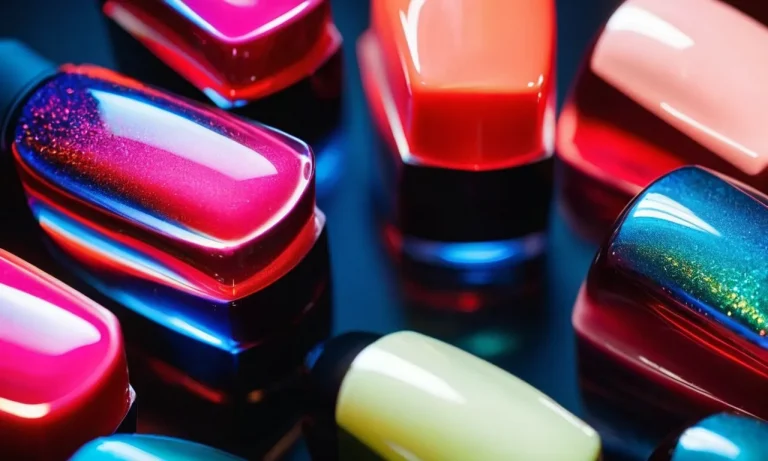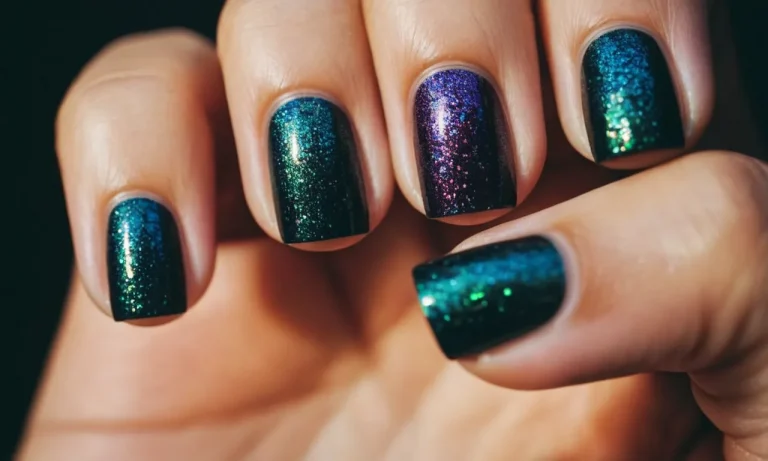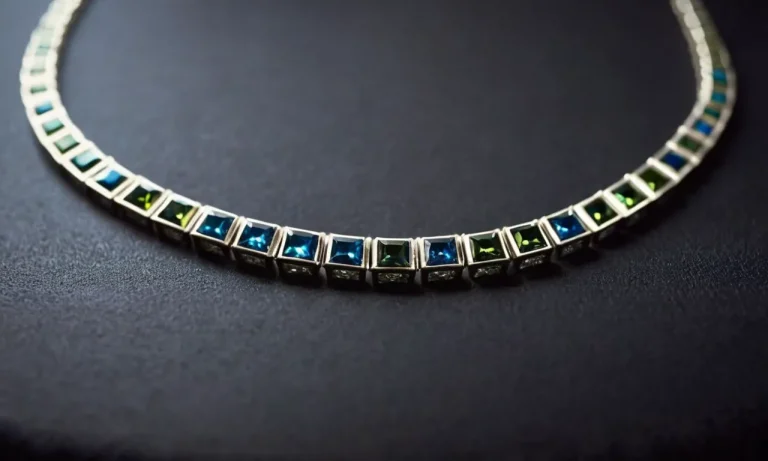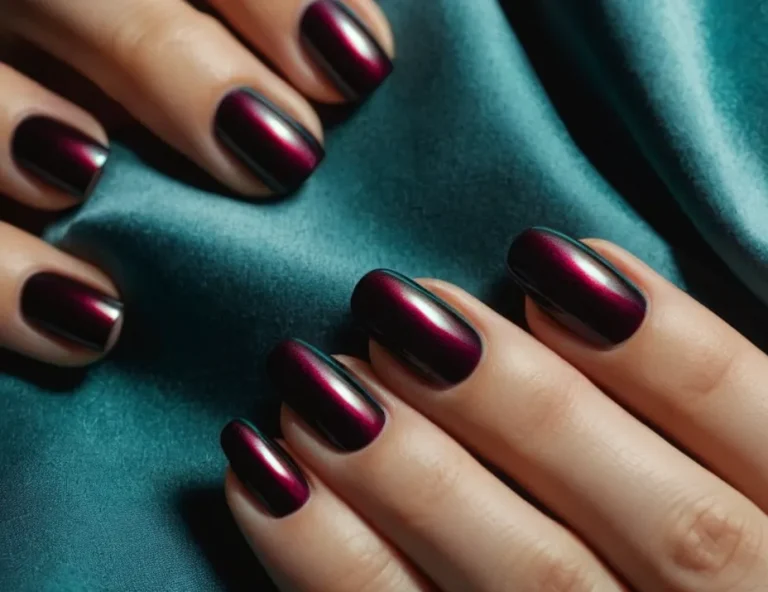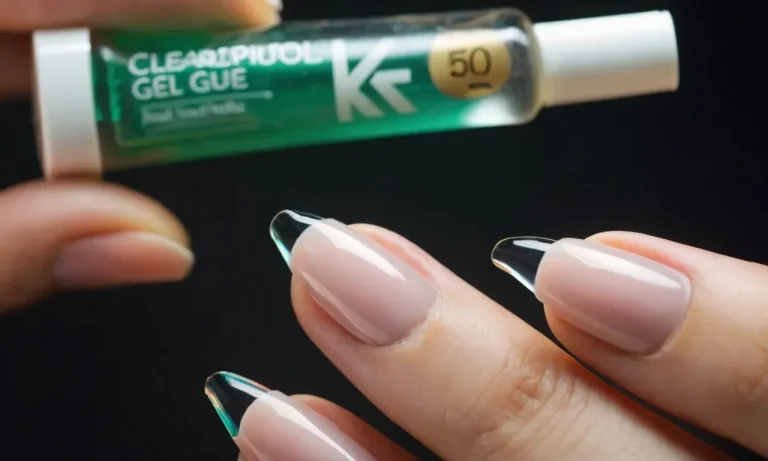Why Is My Toenail Turning Brown? A Comprehensive Guide
If you’ve noticed one or more of your toenails turning brown, you’re probably wondering what’s going on. Discolored toenails can be caused by a number of things, ranging from harmless to more serious conditions.
In this comprehensive guide, we’ll walk you through all the potential causes and treatments for brown toenails.
If you’re short on time, here’s a quick answer: The most common causes of brown toenails are trauma, fungal infections, and nail polish. Less common causes include melanoma, chemical exposure, and certain medications.
Common Causes of Brown Toenails
Trauma
One of the most common causes of a brown toenail is trauma or injury to the toenail. This can happen from stubbing your toe, dropping something on your toe, tight shoes that repeatedly jam your toenail, or participating in high-impact sports like running or soccer.
The trauma causes bleeding underneath the nail, which then dries and turns brown. This is called subungual hematoma. It’s essentially a bruise under the nail. The discoloration grows out with the nail over several months.
If the injury is severe enough, the nail may fall off completely and a new one will have to grow in its place.
Fungal Infections
Toenail fungus, also called onychomycosis, is another very common cause of brown toenails. Fungal infections account for about 50% of all discolored toenails. The fungi feed on keratin, the protein that makes up the hard surface of the nails.
As the infection worsens, the nail can become brittle and crumbly. It may separate from the nail bed. Debris can build up under the nail, making it appear dark brown or black. Onychomycosis is contagious and spreads quickly in warm, moist environments like public showers or swimming pools.
Toenail fungus is notoriously difficult to cure. Over-the-counter antifungal creams are often ineffective. Oral prescription medications may be necessary but can cause side effects. Laser therapy is also an option.
Nail Polish
Dark-colored nail polish can temporarily stain the nails, especially if left on too long. Using nail polish remover may get some of the stain off, but it can be stubborn. Colored polish may interact with the keratin in the nails, creating a type of permanent dye.
With repeated use, staining becomes worse over time. The best way to avoid this is to not leave dark polish on the nails for more than a week at a time. Always remove old polish thoroughly before reapplying. Using a clear base coat first can also help minimize staining.
Aging
As we get older, our nails tend to yellow with age. Years of exposure to sunlight, pollution, and other environmental factors take their toll. The cuticle may also recede and the nails may develop ridges and become more brittle.
Aging nails are thinner and have less moisture, making them more transparent and allowing the yellow color of the nail bed to show through. While this isn’t harmful in itself, it can be unsightly. Keeping nails trimmed and moisturized may help maintain a healthier appearance.
But for the most part, nail discoloration is an unavoidable part of the aging process.
Less Common Causes of Brown Toenails
Melanoma
Melanoma is a rare but serious cause of brown discoloration in toenails. It is a type of skin cancer that develops when melanocytes (pigment-producing cells) mutate and grow out of control. Melanoma most often occurs on sun-exposed skin, but it can occasionally affect the nails.
Subungual melanoma specifically refers to melanoma of the nail bed. It accounts for only around 2-3% of all melanoma cases.
The most common early sign of subungual melanoma is a longitudinal brown or black streak down the length of the nail. As the cancer advances, the discoloration may involve the entire nail bed. The nail may darken, thicken, and become brittle or crumbly.
Sometimes melanoma causes the nail to separate from the nail bed. Advanced subungual melanomas may be painful or bleed.
It is crucial to have any persistent nail discoloration evaluated by a dermatologist. Diagnosis often involves a nail biopsy. Subungual melanomas have a high tendency to spread to other areas of the body, so early detection and treatment provide the best prognosis.
Treatment options include surgery, radiation therapy, chemotherapy, and targeted drug therapy. The 5-year survival rate is estimated around 80% when melanoma is localized in the nail bed, but this drops to less than 20% once it has spread distantly.
Chemical Exposure
Chemicals found in certain products or occupations can sometimes stain toenails brown. Acute high-dose exposure to certain chemicals may cause immediate discoloration, while lower levels over time can also stain nails. Common culprits include:
- Hydrogen peroxide – Used as an antiseptic and bleaching agent
- Phenol – Found in medical and industrial disinfectants
- Formaldehyde – Used in embalming fluid and textile manufacturing
- Arsenic – Used in some pesticides, wood preservatives, and electronics production
- Antimony – Used in flame retardants, paints, ceramics, and metal alloys
- Silver – Used in photographic developing solutions
- Picric acid – Used in antiseptics, dyes, and explosives
Once the chemical exposure stops, the discoloration usually grows out with the nail over time. But prolonged exposure can lead to permanent staining. Protective equipment like gloves reduces occupational exposure risk.
Chemical nail stains are harmless on their own but may indicate toxic levels within the body, so further medical evaluation is recommended.
Medications
Certain prescription medications have been associated with brown toenail discoloration in some individuals. However, medication-induced nail pigmentation is considered rare overall.
One medication that can uncommonly turn nails brown is tetracycline antibiotics. Tetracyclines are broad-spectrum antibiotics that were frequently prescribed in the past for conditions like acne, respiratory infections, and Lyme disease.
They are not used as often today due to increased bacterial resistance. Minocycline is the tetracycline most frequently linked to nail discoloration. The staining tends to gradually resolve after stopping the medication.
Other medications reported to stain nails brown in isolated cases include:
- Zidovudine – An HIV/AIDS medication
- Clofazimine – A leprosy medication
- 5-fluorouracil – A chemotherapy drug used topically for actinic keratoses
- Azathioprine – An immunosuppressant drug used in organ transplants
Since medication-induced nail discoloration is unpredictable and the underlying drugs are often necessary, treatment involves simply waiting for the staining to grow out. Temporary nail polishes can mask the appearance.
When to See a Doctor
A discolored toenail is usually nothing to worry about. However, in some cases, a brown toenail can indicate an underlying medical condition that requires treatment. Here’s a guide on when you should see a doctor for a brown toenail:
If the Discoloration is Severe
Mild toenail discoloration that only affects a small portion of the nail is usually harmless. But if the majority of your toenail has turned brown or black, it’s best to get it checked out. Severe discoloration can be a sign of melanoma, a serious form of skin cancer.
It’s better to be safe than sorry when it comes to distinguishing between normal nail pigmentation and melanoma.
If the Toenail is Damaged or Deformed
Along with discoloration, take note if your toenail has become thickened, brittle, or misshapen. Damaged nails that are also discolored may indicate a fungal infection or inflammatory condition like psoriasis. See your doctor to get the right diagnosis and treatment.
If Discoloration Spreads to Multiple Toenails
It’s fairly common for one toenail to become bruised and turn brown after suffering trauma. But if you notice dark streaks or spots appearing on several nails, it could signal a systemic problem. Make an appointment with your doctor to identify factors involving circulation, medications, or disorders leading to multi-nail discoloration.
If the Discoloration is Accompanied by Other Symptoms
Take into consideration any other symptoms occurring along with the brown toenail:
- Throbbing pain in the toe
- Pus or foul-smelling discharge from the nail
- Redness or swelling around the nail
- Detachment of the nail from the nail bed
These warrant medical attention to diagnose and properly manage infection or other ailments.
If You Have Diabetes
People with diabetes are at higher risk for toenail discoloration and fungal infections. Even minor nail changes could progress to serious complications. Check in with your doctor regarding any unusual toenail appearance to stay on top of your health.
If Home Treatments Don’t Work
You can try over-the-counter antifungal creams, tea tree oil, vinegar soaks, and other home remedies to improve a discolored nail. However, if weeks go by without any results, it’s best to have your doctor investigate further and provide stronger medicated treatments.
Don’t panic over a brown toenail, but do monitor it closely. Consult a podiatrist or dermatologist if the discoloration lingers or worsens. Proper diagnosis of the underlying cause is key to fixing the problem quickly and avoiding complications.
Addressing toenail issues early on leads to better outcomes.
Treating Brown Toenails
Treating Trauma
If your brown toenail is caused by trauma like dropping something on your toe, the treatment approach will focus on allowing the bruised nail to grow out. Here are some tips for treating a brown toenail caused by trauma:
- Keep the toenail dry and clean to prevent infection. Gently wash with soap and water and apply an antibiotic ointment.
- Trim the nail straight across as it grows to prevent ingrown toenails.
- Apply ice packs to relieve pain and swelling.
- Take over-the-counter pain medication like acetaminophen or ibuprofen.
- Wear open-toed shoes or sandals to avoid pressure on the bruised nail.
- See your doctor if the toenail becomes ingrown or infected.
With proper self-care, a bruised toenail will usually grow out in 6-12 months. Have patience as the new healthy nail grows in!
Treating Fungal Infections
If a fungal infection is the cause of the brown discoloration of the toenail, antifungal prescription medications will be necessary. Oral medications or topical solutions may be prescribed depending on the severity of the infection.
- Oral antifungal medications like terbinafine or itraconazole are the most effective for treating stubborn toenail fungus. The medication is taken for 6-12 weeks typically.
- Topical antifungal lacquers with ciclopirox or amorolfine may also be used daily for up to a year to penetrate the nail and stop fungal growth.
- For best results, trim infected nails short and thin to allow the medication better absorption.
- Be patient – it takes time for new, fungus-free nail growth to appear after treatment.
In 2022, about 10% of people in the United States suffer from fungal nail infections, according to the American Academy of Dermatology. So if the fungus is causing brown discolored nails, rest assured treatment options are available.
Treating Other Causes
Brown toenails may also be caused by various medical conditions that require treatment:
- Psoriasis – Topical steroid creams and oral medications can treat this autoimmune skin condition that may discolor nails.
- Eczema – Emollients applied to the nail area can improve eczema inflammation affecting nail color.
- Diabetes – Controlling blood sugar levels improves circulation and may help resolve nail discoloration.
- Aging – As we get older, nails may darken with less circulation. But certain vitamins can help maintain nail health.
- Skin cancer – See your dermatologist about biopsy and treatment options if brown nails are due to suspected melanoma.
The right diagnosis is key! Talk to your doctor if the brown toenail does not resolve with over-the-counter methods. Underlying health issues may require management to prevent progression of nail discoloration.
Preventing Brown Toenails
Wear Properly Fitting Shoes
One of the most common causes of brown toenails is wearing shoes that are too tight or small. When your toes are constantly rubbing against the front of your shoes, it can put pressure on the nails and cause bruising or injury.
To avoid this, make sure to wear properly fitted shoes that allow enough room for your feet to spread out and toes to move. It’s best to get your feet measured every time you buy new shoes. Also, try on shoes at the end of the day when your feet are slightly swollen.
Shoes that are too narrow or too short can gradually damage nails over time without you realizing it. Sticking to well-fitting footwear is key!
Treat Injuries Promptly
If you suffer any trauma or injury to your toenails, treat it right away to prevent lasting discoloration. Stubbing your toe, dropping something on it, or jamming it during sports can all cause brown, bruised nails. Apply ice immediately to reduce swelling and tenderness.
Bandage the toe to protect it while it heals. See a podiatrist if the nail becomes very dark, detached, or painful which may indicate something more serious like an infection. Leaving toenail injuries untreated allows blood and fluid to collect under the nail, staining it brown.
Catching problems early makes discoloration less likely.
Practice Good Foot Hygiene
Making toenail hygiene part of your regular routine can minimize risk of fungal infections that cause nails to turn brown, yellow or brittle. Wash your feet daily with soap and water, drying carefully between the toes. Trim nails straight across to prevent ingrown toenails.
Don’t pick at or bite nails, which exposes them to bacteria and moisture. Wear shower shoes in public showers or locker rooms. Disinfect nail tools after each use. Consider applying an antifungal powder or spray to feet to prevent buildup of fungi.
Keep feet dry with breathable socks and switch socks frequently if sweating. Simple foot care habits make a big difference in keeping toenails healthy!
Conclusion
In summary, brown toenails are often caused by minor trauma or fungal infections. But in some cases, they may signal an underlying health condition that requires medical attention. If home treatments don’t improve the appearance of your toenails after a few weeks, make an appointment with your doctor.
With proper care and prompt treatment if needed, you can get your toenails looking healthy again.


